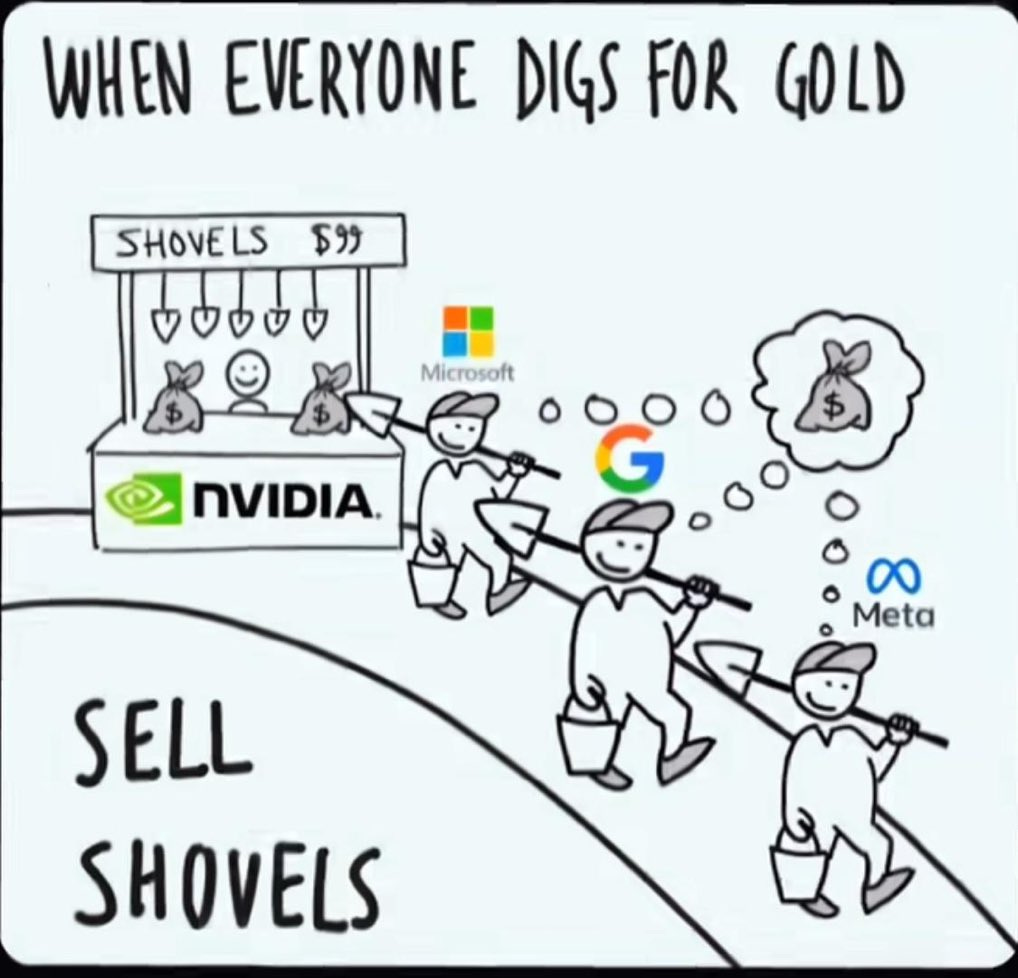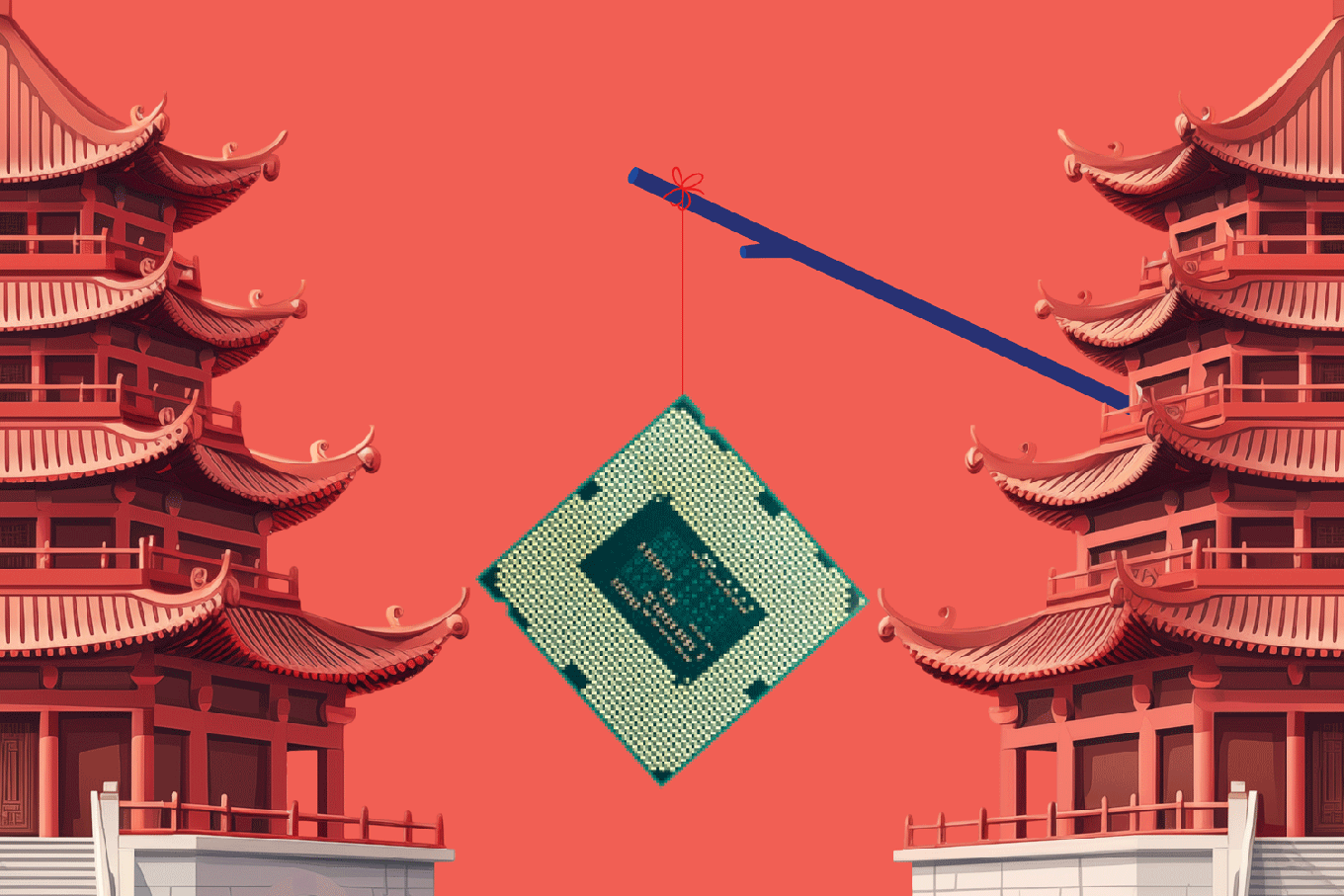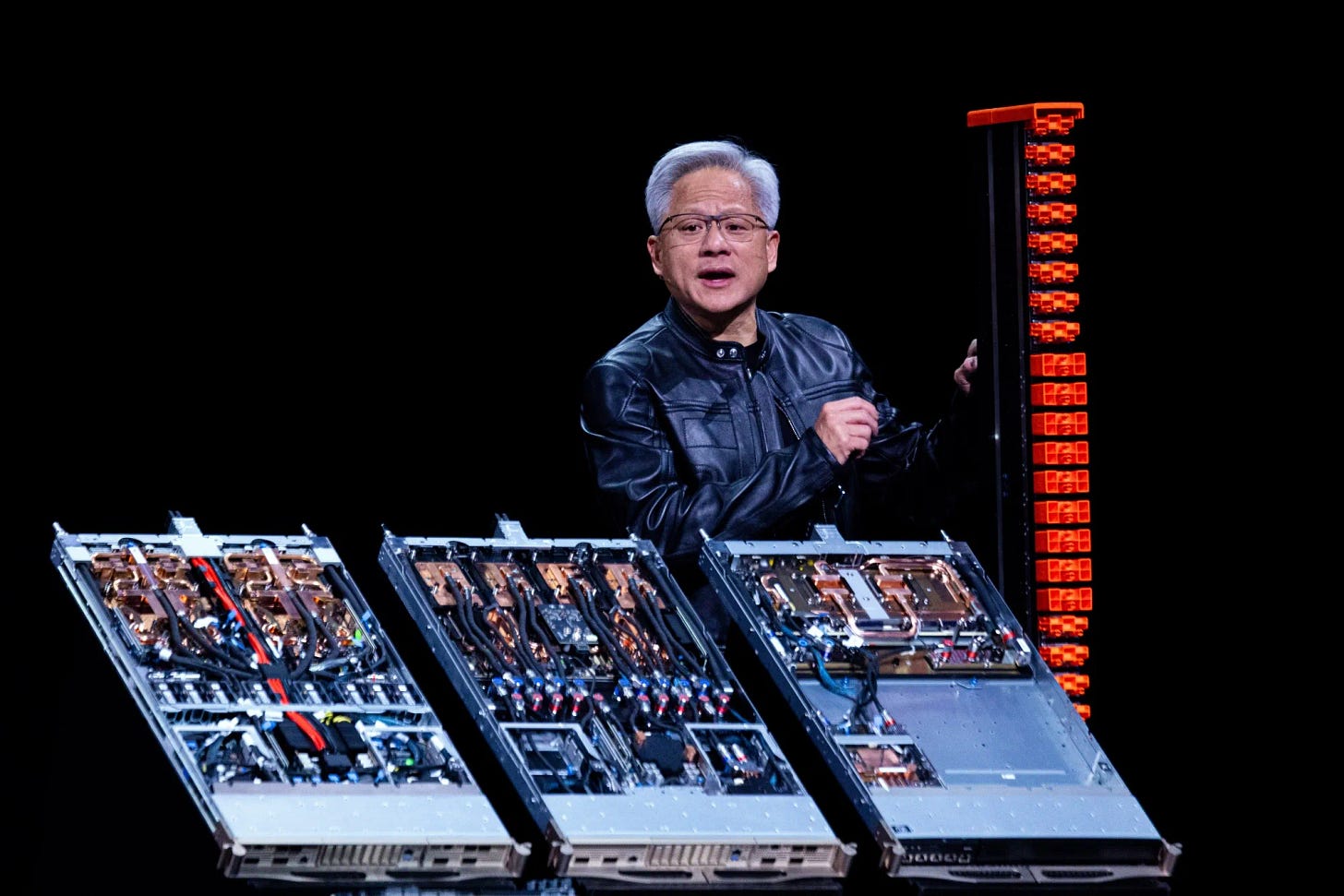
AI: Despite China 'Wild Card', Nvidia's 'Groundhog Day' AI Reign continues. RTZ #828
Nvidia negotiated another extraordinary quarter through exceptionally turbulent geopolitical waters. For now.
With Q2 Fiscal 2026 ended, another remarkable earnings results quarter is under Nvidia’s belt. And to cut to the chase, the company continues its reign in AI. Demand remains way ahead of Supply for the next couple of years at least. So it’s a matter of making enough AI Infrastructure to feed into the global demand.
Especially as the exponential demand for Intelligence Tokens generated mostly through Nvidia AI Infrastructure, see no limits. As analyst Ethan Ding notes in this piece on AI Intelligence Token growth (link below mine):
“while it’s true each generation of frontier model didn’t get more expensive per token, something else happened. something worse. the number of tokens they consumed went absolutely nuclear.”
“chatgpt used to reply to a one sentence question with a one sentence reply. now deep research will spend 3 minutes planning, and 20 minutes reading, and another 5 minutes re-writing a report for you while o3 will just run for 20-minutes to answer ‘hello there’.”
“the explosion of rl [reinforcement learning] and test-time compute has resulted in something nobody saw coming: the length of a task that ai can complete has been doubling every six months. what used to return 1,000 tokens is now returning 100,000.”
And not stopping there.
All that token compute of course needs more ‘chips’ and a whole lot more AI Infrastructure from Nvidia and others. Particularly as AI Scales in truly unexpected ways.
And so the demand for ‘AI Compute’ is growing in unprecedented amounts. All due to seemingly unending new AI bottom up technology innovations since OpenAI’s ‘ChatGPT Moment’ now just a thousand plus four days ago. Hard to fathom it all kicked off on November 29, 2022.
Now we have the top US Tech companies investing $300 plus billion per year and accelerating. With Nvidia a key US beneficiary .
It’s a headline I’ve used for many quarters now. And this post earnings day after the quarter feels like another ‘Groundhog Day’. Demand for its AI Chips, ‘AI Factory’ Systems Infrastructure for the trillion plus dollar making and remaking of the world’s data centers, continues to roll on. It’s core moat is stronger than ever. As far as the eye can see for now.
So despite these fundamental tail winds and ‘good news’, why the ‘slower’ Nvidia growth guidance ahead after this otherwise great quarter?
The ‘bad news’ answer is the China Wild Card. Nvidia’s near and longer term future is utterly tied to founder/CEO Jensen Huang getting a truer grip on its China chip sales in the weeks and months ahead. So that’s the good news.
So Nvidia for now is stuck in a ‘Groundhog Day’ loop with both the ‘good and ‘bad’ co-existing together.
As I said after the last quarter in daily RTZ post #735, Nvidia “Nvidia reigns on DESPITE China hits”. That headline literally works again for this quarter. With the tweak being that this time the geopolitical battle and on-going ‘negotiations’ between the US and China getting tougher. On both sides. With Jensen/Nvidia squarely in the middle.
As Axios puts it succintly, “Nvidia has a China Problem”. Still:
“Nvidia, the biggest company in the world by market cap, reported world-beating results Wednesday evening. But export controls to China dampened its data center revenue, and that’s making investors nervous.”
“Why it matters: Nvidia is caught in the middle of a Trump trade war that could impact its earnings growth and the trajectory of the entire stock market.”
A key issue is one of each side’s perception of their negotiating leverage:
“What they’re saying: “We need [China] more than they need us,” Paul Meeks, managing director and head of technology research at Freedom Capital Markets, tells Axios.”
“CEO Jensen Huang sees the Chinese market as a $50 billion opportunity that could grow 50% per year.”
“That’s why investors want the doors to that market wide open.”
To recap the recent ‘off again, on again’ history here:
“Catch up quick: The Trump administration barred exports of Nvidia’s H20 chips to China in April.”
“The ban was reversed in July after the Nvidia CEO visited the White House and agreed to give a 15% cut of revenue from China chip sales to the U.S. government.”
“Nvidia still can’t sell its most powerful chips to China, though it is urging the U.S. government for approval.”
Thus the US inflicted air pockets in its business:
“By the numbers: Export controls pressured its data center revenue, which came in just below Wall Street estimates, at $41.1 billion.”
“Part of that was due to a $4 billion reduction in H20 chip sales.”
Which results in massively wide ranges on what could be sold into China, if political needs on both sides can be scratched at the top in both countries:
“State of play: Nvidia CFO Colette Kress said the company would ship between $2 billion and $5 billion worth of H20 chips in the current quarter.’“
“The company gets half of its data center revenue from large cloud service providers, which happen to be the other biggest companies in the S&P 500.”
And as I’ve noted before, those customers are also Nvidia’s top ‘Frenemies’:
“All of those companies have already committed to record AI spending, which could translate to upside for Nvidia.”
And the investor green lights couldn’t be flashing more on those AI capex and talent commitments. Making Nvidia bigger than ever.
“Zoom out: Nvidia makes up 8% of the value of the benchmark S&P 500.”
“If export controls impact Nvidia, the effects could reverberate through the entire stock market.”
Thus the heightened risks around the US/China balancing act where CEO Jensen Huang continues to play a key role.
Part of Nvidia’s core problem is that both US and China are now intent on using Nvidia and AI Chips as a core political football, with top-down rhetoric now potentially doing more harm than good.
As Stratechtery notes in its post quarter assessment on this football game now almost crossing the line of the other party’s sense of RESPECT:
“Nvidia cleared one hurdle when the Trump administration, after pausing H20 sales, allowed them to resume; the Chinese government, however, then told Chinese companies to not buy the H20. From the Financial Times as to why:
“According to people with knowledge of the regulatory action, the Cyberspace Administration of China (CAC), the National Development and Reform Commission (NDRC) and the Ministry of Industry and Information Technology (MIIT) moved in response to comments made by Lutnick last month. “We don’t sell them our best stuff, not our second-best stuff, not even our third-best,” Lutnick told CNBC on July 15, the day after the Trump administration lifted export controls, implemented in April, on H20 sales. “You want to sell the Chinese enough that their developers get addicted to the American technology stack, that’s the thinking,” he added.”
The reaction on the other side of course should not be surprising:
“Some of China’s senior leaders found the comments “insulting”, leading the policymakers to seek ways to restrict Chinese tech groups from buying the processors, according to two people with knowledge of the latest regulatory decision-making. As a result, Chinese tech groups held off or significantly downsized their H20 orders, according to those with knowledge of their plans.”
This is a lesson we all learned universally in Kindergarten. Don’t cross the line by treating others in a manner we would not want to be treated ourselves.
“I’m always wary of falling into the trap of blaming the U.S. for Chinese decisions; this overly solipsistic view of the world is the root of a lot of bad analysis, beyond being insulting to the intelligence and volition of the U.S.’s chief geopolitical rival. At the same time, it would be nice to see the counterfactual of Lutnick keeping his mouth shut, or better yet, the Trump administration not raising a ruckus about the H20 in the first place.”
Amen.
A painful reality for Nvidia, with the heads of both countries now using Nvidia as more of a political football than ever before. Despite the truly onerous consequences for both countries in terms of long-term ‘AI Supremacy’ if they get it wrong on either side.
You can read all the details about the quarter and the market reactions here, here and here. Bottom line, Nvidia’s core customers globally couldn’t be more keyed up to needing more of Nvidia’s hardware and software products for the next few years.
But the broader issue is that we may be nearing the point where the geopolitical posturing by the US in curtailing Nvidia chips into China, maybe hitting the third rail of RESPECT that both parties really need in a successful negotiation.
And that is the tight wire that Nvidia and its adroit founder/CEO Jensen Huang will continue to need to balance. Despite a fundamental supply/demand picture for its core producrs and services, and a Moat around its business, that couldn’t be better thus far in this AI Tech Wave. Stay tuned.
(NOTE: The discussions here are for information purposes only, and not meant as investment advice at any time. Thanks for joining us here)














